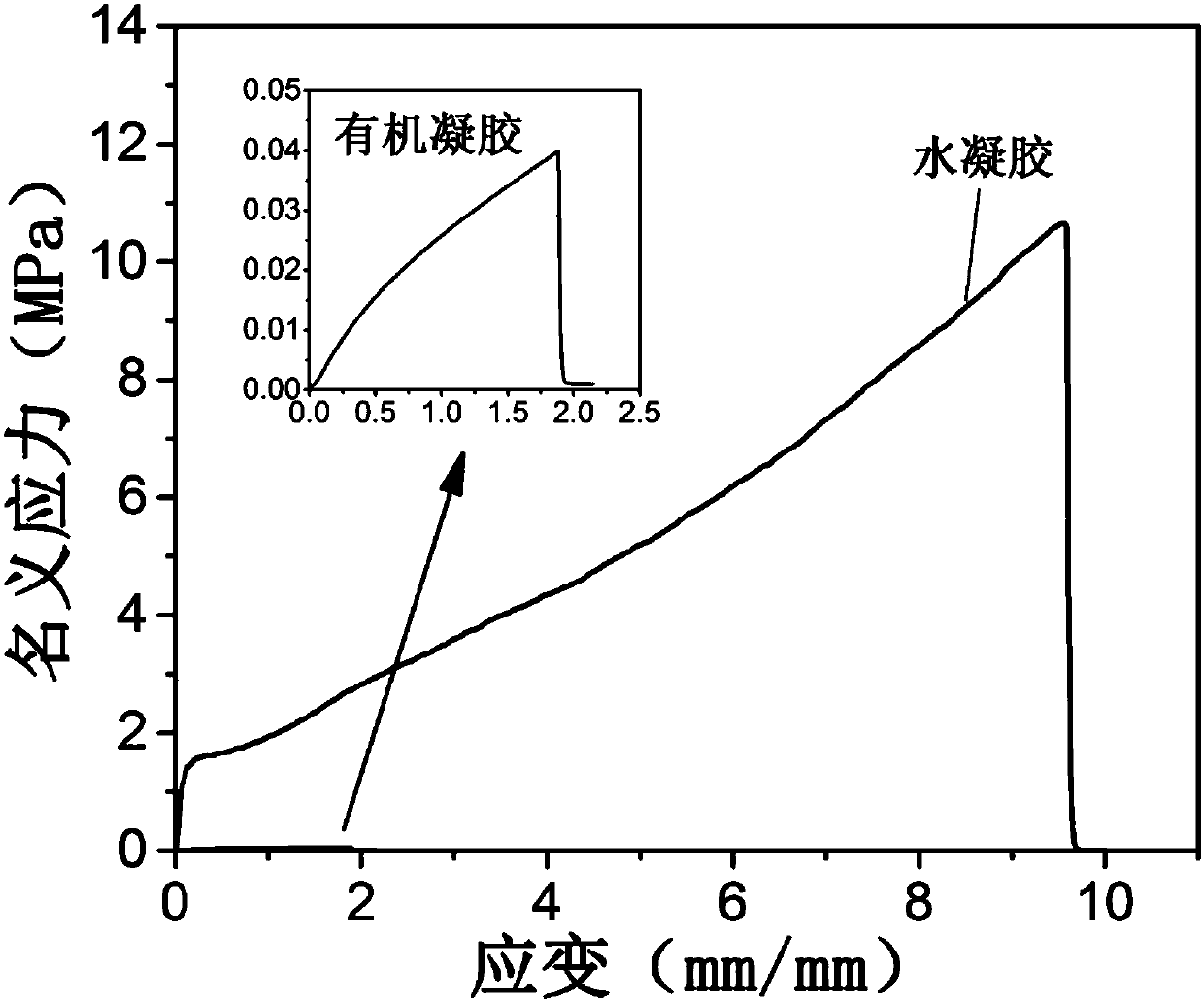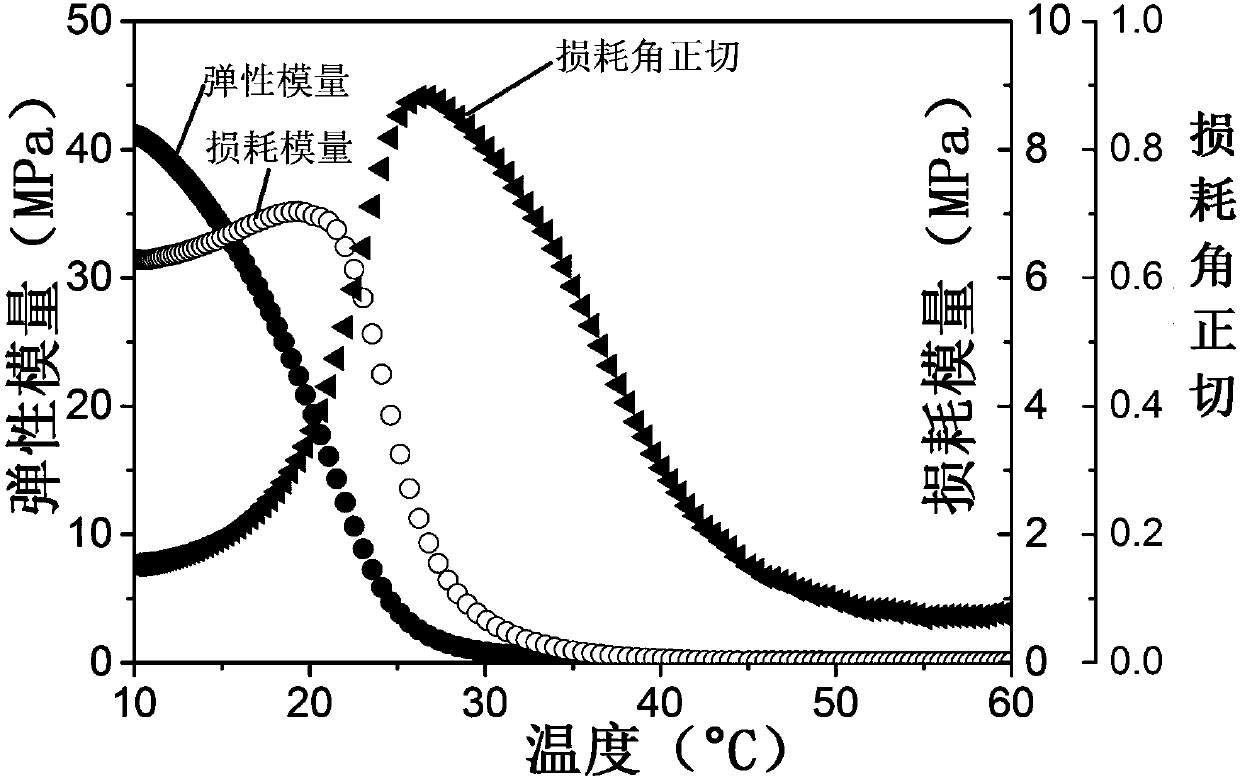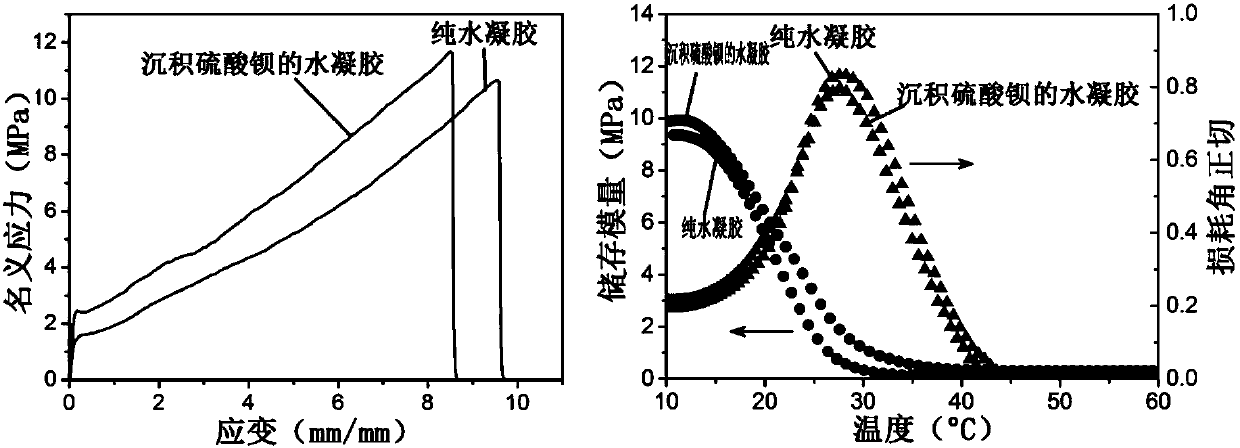Body temperature stimulating shape memory hydrogel for hemangioma embolization, preparation method and applications thereof
A hydrogel and hemangioma technology, applied in medical science, surgery, etc., can solve the problems of low filling rate of metal spring coils, and achieve the effect of simple preparation method, low filling rate and easy recanalization, and excellent shape memory function
- Summary
- Abstract
- Description
- Claims
- Application Information
AI Technical Summary
Problems solved by technology
Method used
Image
Examples
Embodiment 1
[0034] Step 1: Weigh 0.5g of acrylamide and 0.1875g of polyethylene glycol dimethacrylate with an analytical balance, put them in a 10ml centrifuge tube, and then use a pipette to measure 5.063ml of DMSO to dissolve them completely. Add 1ml of acrylonitrile, then add 0.0075g of BPO, mix again, blow nitrogen for 10min to remove oxygen.
[0035] Step 2: After adding 1 μL of DMA and mixing, immediately draw the solution in the centrifuge tube into the capillary with a 10ml syringe, seal both ends with a hemostat, place it in a 25°C incubator for 24 hours, and then take it out.
[0036] Step 3, then tear the tetrafluoroethylene capillary, carefully take out the gel sample, wind it on a steel rod with a length of 10 cm and a diameter of 1 mm, and fix it into a spring shape by soaking in phosphate buffered saline (PBS) at 25 °C . During the above soaking process, the PBS needs to be replaced every 12 hours for a total of 7 days to replace the organic solvent and remove residual mon...
Embodiment 2
[0039] Step 1: Weigh 0.5g of acrylamide and 0.2g of polyethylene glycol dimethacrylate with an analytical balance, put them in a 10ml centrifuge tube, and then use a pipette to measure 5.0ml of DMSO to dissolve them completely. Add 1.5ml of acrylonitrile, then add 0.0075g of BPO, mix again, blow nitrogen for 12min to remove oxygen.
[0040] Step 2: After adding 0.6 μL of DMA and mixing, immediately draw the solution in the centrifuge tube into the capillary with a 10ml syringe, seal both ends with a hemostat, place it in a 22°C incubator for 26 hours, and then take it out.
[0041] Step 3, then tear the tetrafluoroethylene capillary, carefully take out the gel sample, wind it on a steel rod with a length of 12 cm and a diameter of 1.2 mm, and fix it as a spring by soaking in phosphate buffered saline (PBS) at 25 °C shape. During the above soaking process, the PBS needs to be replaced every 10 hours for a total of 10 days to replace the organic solvent and remove residual mono...
Embodiment 3
[0044] Step 1, use an analytical balance to weigh 0.5g of acrylamide and 0.15g of polyethylene glycol dimethacrylate, put them in a 10ml centrifuge tube, and then use a pipette to measure 5.1ml of DMSO to dissolve them completely. Add 0.5ml of acrylonitrile, then add 0.0075g of BPO, mix again, blow nitrogen for 8min to remove oxygen.
[0045] Step 2: After adding 1.2 μL of DMA and mixing, immediately draw the solution in the centrifuge tube into the capillary with a 10ml syringe, seal both ends with a hemostat, place it in a 26°C incubator for 22 hours, and then take it out.
[0046] Step 3, then tear the tetrafluoroethylene capillary, carefully take out the gel sample, wind it on a steel rod with a length of 8 cm and a diameter of 0.8 mm, and fix it as a spring by soaking in phosphate buffered saline (PBS) at 25 °C shape. During the above soaking process, the PBS needs to be replaced every 9 hours for a total of 5 days to replace the organic solvent and remove residual monom...
PUM
 Login to View More
Login to View More Abstract
Description
Claims
Application Information
 Login to View More
Login to View More - R&D
- Intellectual Property
- Life Sciences
- Materials
- Tech Scout
- Unparalleled Data Quality
- Higher Quality Content
- 60% Fewer Hallucinations
Browse by: Latest US Patents, China's latest patents, Technical Efficacy Thesaurus, Application Domain, Technology Topic, Popular Technical Reports.
© 2025 PatSnap. All rights reserved.Legal|Privacy policy|Modern Slavery Act Transparency Statement|Sitemap|About US| Contact US: help@patsnap.com



